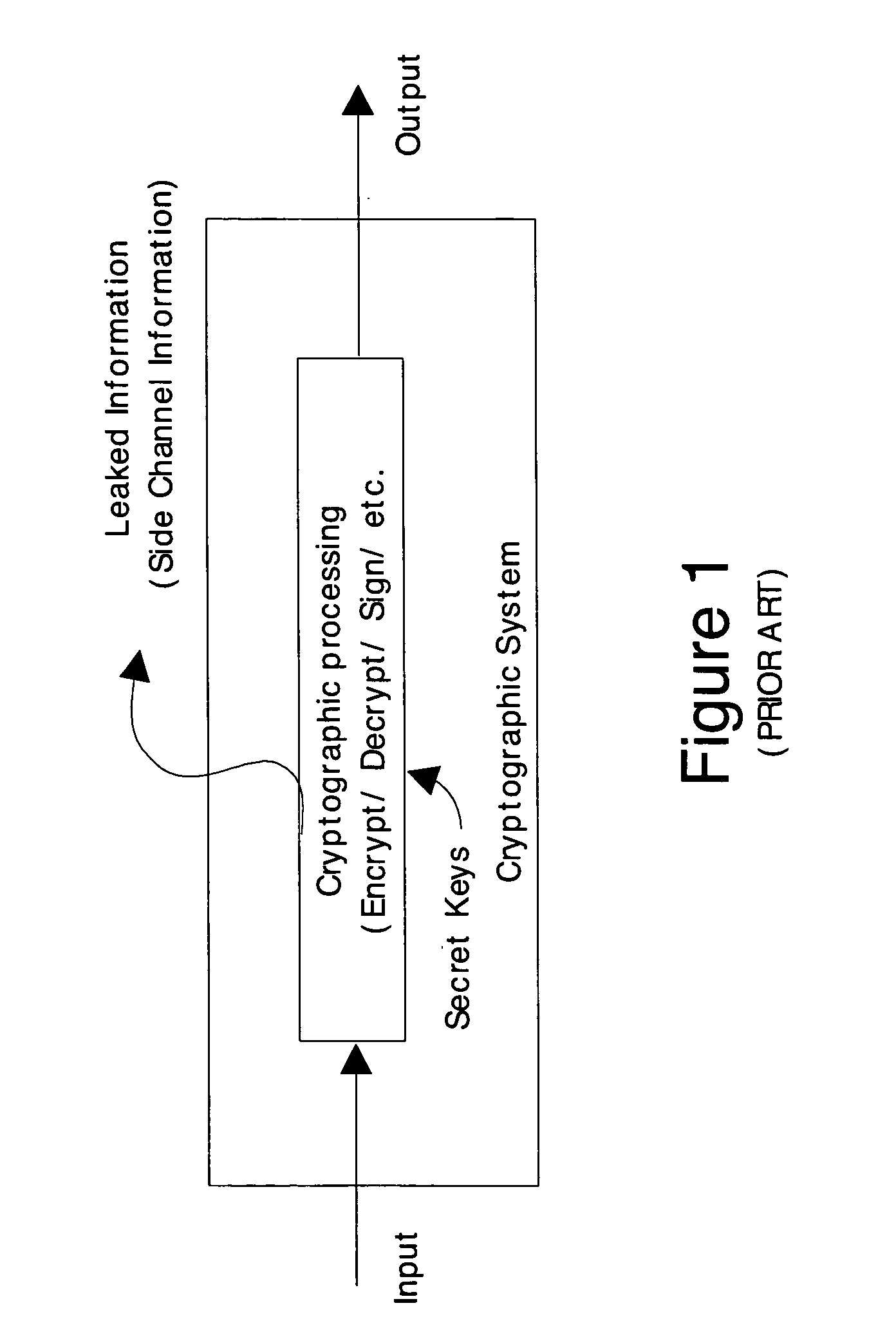Cryptographic CPU architecture with random instruction masking to thwart differential power analysis
- Summary
- Abstract
- Description
- Claims
- Application Information
AI Technical Summary
Benefits of technology
Problems solved by technology
Method used
Image
Examples
Embodiment Construction
[0039] The present invention now will be described more fully hereinafter with reference to the accompanying drawings, in which preferred embodiments of the invention are shown. This invention may be embodied in many different forms and should not be construed as limited to the embodiments set forth herein.
[0040] In general, any encryption algorithm is a series of instructions executed by a processor (e.g. a CPU). While the inputs and outputs of these instructions will vary, the amount of time required to complete each instruction is determined by the clock speed of the processor or a bus over which the data is transmitted to and from the processor. Different instructions may take more clock cycles than other instructions. The knowledge of the encryption algorithm used to encrypt / decrypt the data provides hackers with knowledge about the timing of the algorithm, i.e. knowledge about which instructions are used and thus how long each instruction should take. This knowledge about tim...
PUM
 Login to View More
Login to View More Abstract
Description
Claims
Application Information
 Login to View More
Login to View More - R&D
- Intellectual Property
- Life Sciences
- Materials
- Tech Scout
- Unparalleled Data Quality
- Higher Quality Content
- 60% Fewer Hallucinations
Browse by: Latest US Patents, China's latest patents, Technical Efficacy Thesaurus, Application Domain, Technology Topic, Popular Technical Reports.
© 2025 PatSnap. All rights reserved.Legal|Privacy policy|Modern Slavery Act Transparency Statement|Sitemap|About US| Contact US: help@patsnap.com



